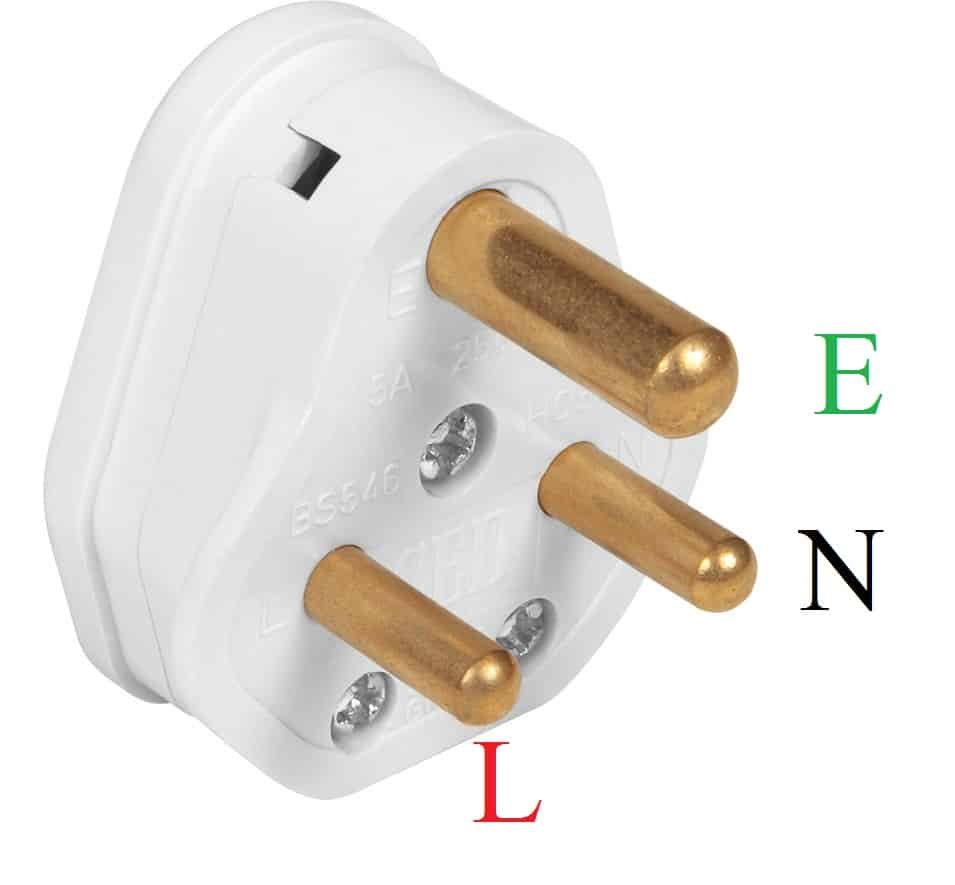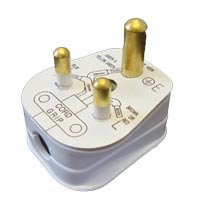Safety is the primary element of any circuit or electrical connection. Whether it is electric iron or refrigerator or any other home appliances, everywhere safety has to be ensured to protect the people getting in contact with them from electrocution.
The question, “why one of the pins in a three-pin plug is longer and thicker than the other pins” might have raised at least once in every one of us”. And the answer to the same is very simple – “To ensure our safety”.
Some of the home appliances are provided with a two-pin plug and some others are provided with three-pin plugs. Now one more question may arise – “Why some are provided with two pins and the other with three pins plug”. And the answer is all safety precautions are taken care of at the design stage itself. And thus no connection to ground is required. We shall once again discuss this topic at the end of this article.
Why is the third pin in the three-pin plug is longer and thicker than the other pins?

First of all, let us learn about the three-pin plug connections. With reference to the picture, the pin marked L is connected to line or phase, the pin marked N is connected to neutral and the pin marked E is connected to the earth. What is so special in the pin E, which makes it longer and thicker than the other pins? It is nothing but safety.
Read More: Difference between Neutral and Earth
Earth provides safer and low resistance path to the flow of current. This limits and helps in discharging the static electricity on the metallic body of any equipment. Also, it protects the person touching the body of the appliance from electric shock (electrocution). Insulation breakdown or insulation damage can result in the discharge of electricity on the metal body of an appliance, endangering the person who operates it. Earth connection safely conducts the discharge on the body of the appliance to ground.
One of the pins in a three-pin plug is longer and thicker than the other pins for the following reasons:
- To make contact with the earth point in the power socket before the line and neutral while inserting the plug. This connects the metal body of the appliance to earth, as a precaution, and ensures personal safety before the line and neutral are connected.
- To break contact with the earth point in the power socket after line and neutral while removing the plug. This ensures personal safety until the line and neutral are disconnected.
- Larger pin provides less resistance to current flow. Hence more fault current can be passed to the ground on the occurrence of a fault.
In order to elaborate on the safety factor involved in this, let us consider a home appliance with a metal body, refrigerator as an example. You might have noticed that refrigerators come with three-pin plugs. The longer and thicker pin on the refrigerator’s plug are directly connected to its metal body. By doing so, on the event of any fault in the refrigerator or if any current-carrying conductors inside the refrigerator touch its body the electric discharge directly flows to the earth and anyone who touches the body of the refrigerator is safe from electrocution.
Why some of the home appliances are provided with two pin plugs and some others are provided with three pins?
In some of the home appliances, mostly electronic, are designed in such a way that any fault or insulation failure inside the appliance will not endanger the person operating it. Such devices are properly insulated (Class II insulated) and do not require their body to be earthed. These devices are provided with two-pin plugs. The appliance with a metal body is always provided with a three-pin plug.
Summary
Larger pin of a three-pin plug connects the earth to the body of the equipment and ensures the safety of the person operating the equipment or appliance. When the body of the equipment is properly earthed, the person operating it is protected from the electrical discharge caused due to insulation failures or internal faults.

Nice explanation